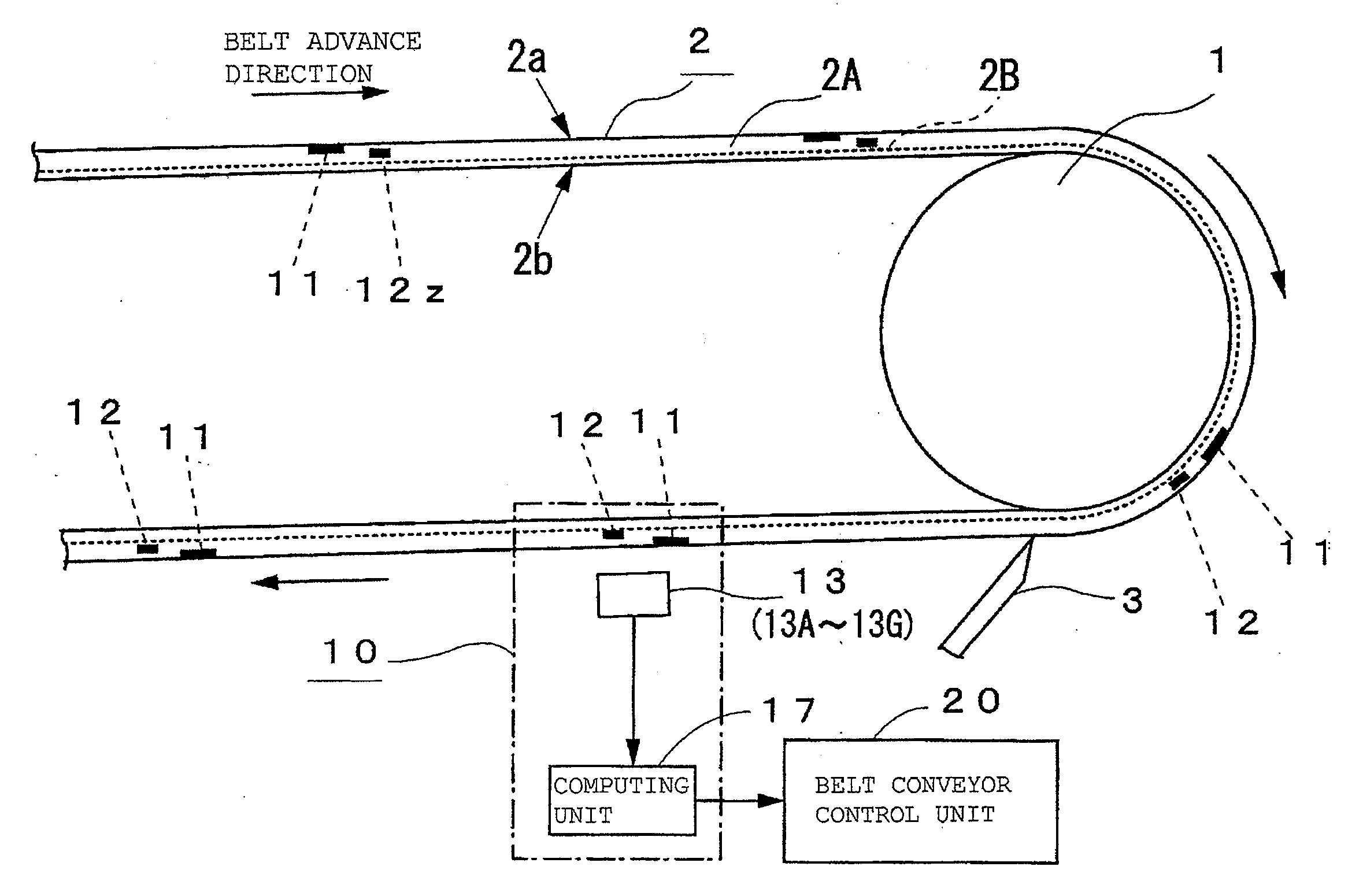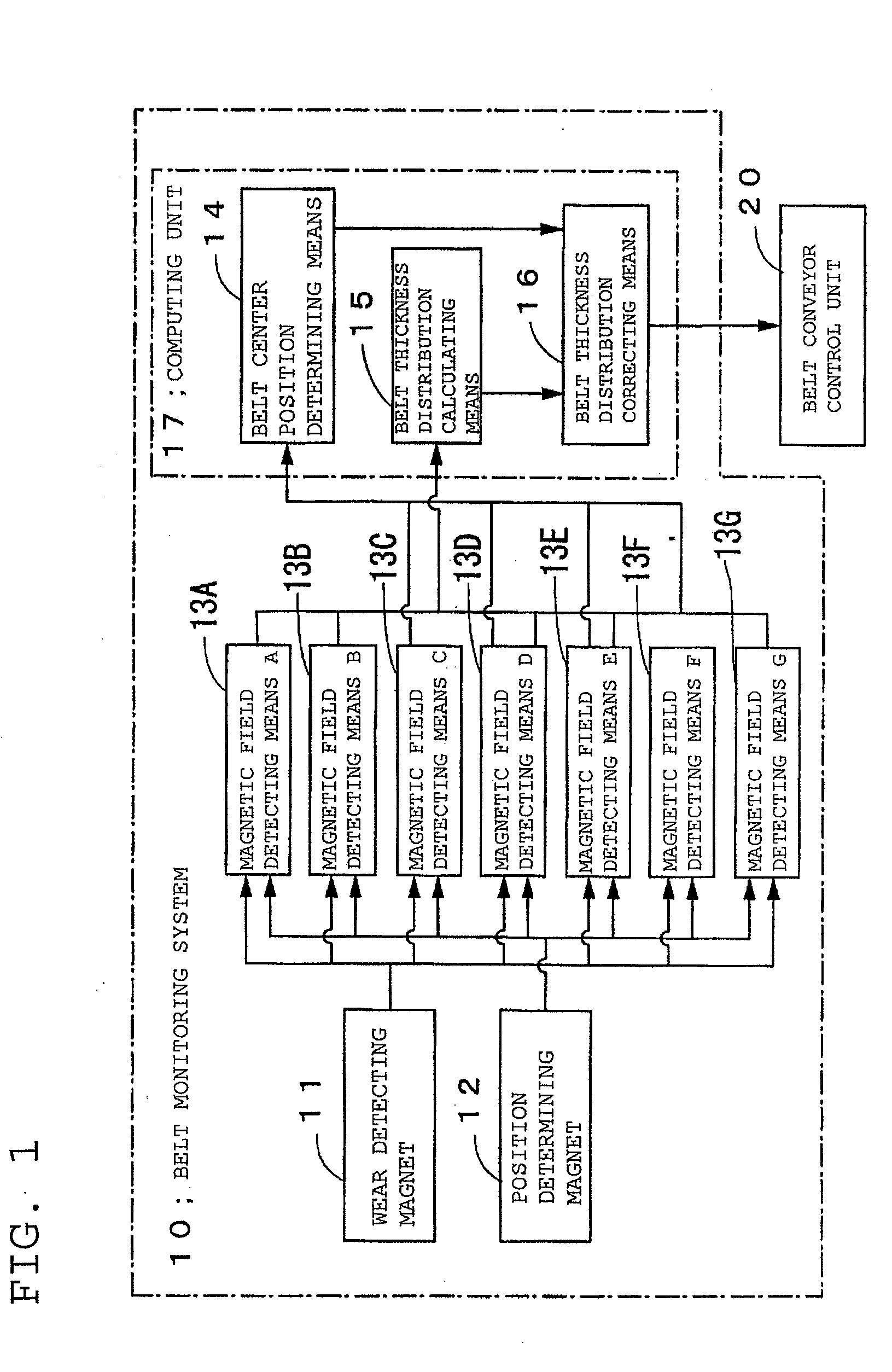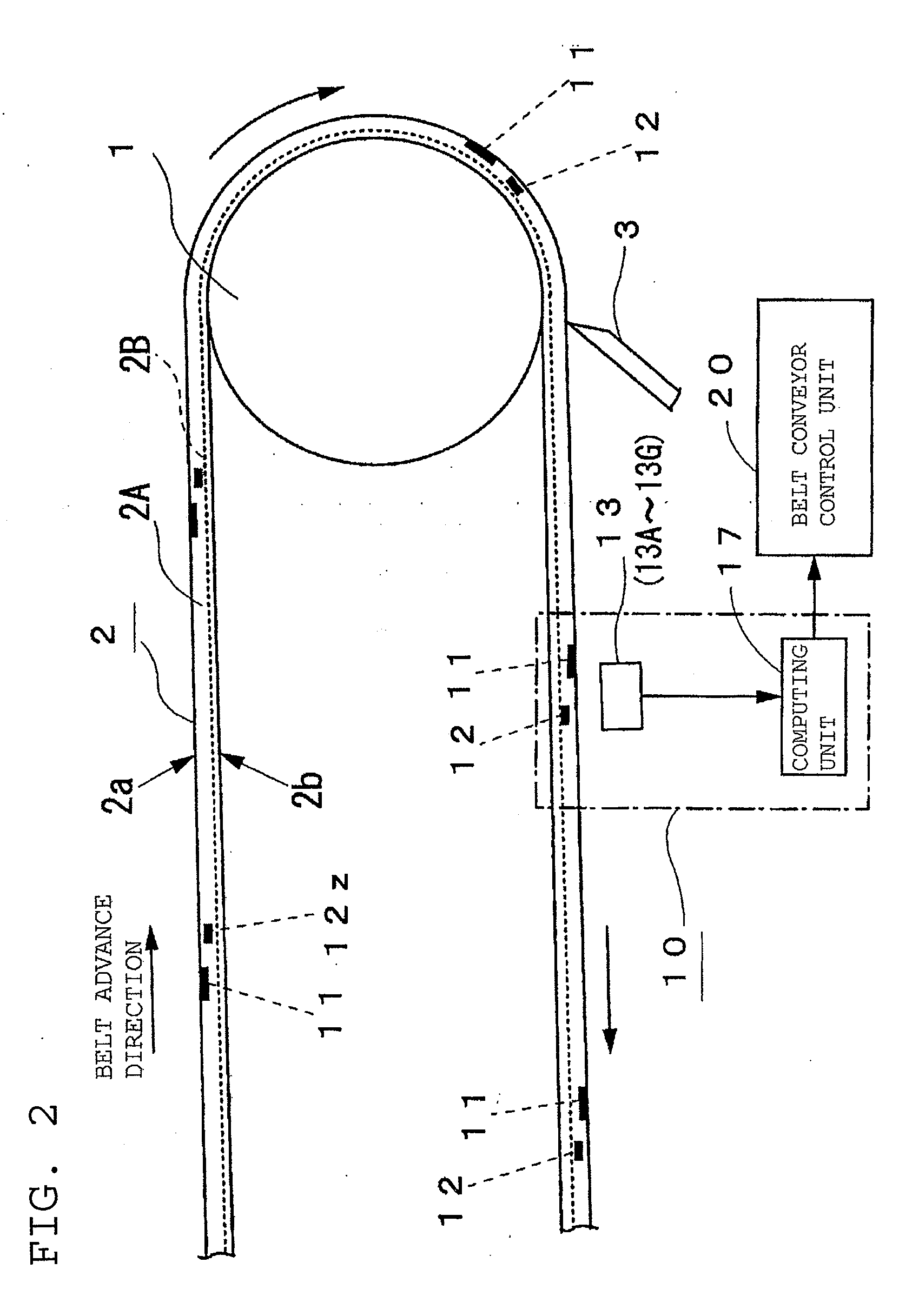Belt monitoring system
a belt monitoring and belt width technology, applied in the direction of magnetic variables, instruments, transportation and packaging, etc., can solve the problem that the conveyor belt b>50/b> is the most susceptible to wear in the middle portion of the belt width, and achieve the effect of improving the monitoring accuracy and high accuracy
- Summary
- Abstract
- Description
- Claims
- Application Information
AI Technical Summary
Benefits of technology
Problems solved by technology
Method used
Image
Examples
Embodiment Construction
[0040]The best mode (preferred embodiments) of the present invention will be described hereinbelow with reference to the accompanying drawings.
[0041]The following description of the preferred embodiments relates to a case of monitoring the distribution of belt thickness in the belt width direction which results from the wear of the conveyor belt.
[0042]FIGS. 1 to 5 illustrate the best mode for carrying out invention.
[0043]FIG. 1 is a functional block diagram of a monitoring system 10 according to the present invention.
[0044]FIG. 2 is a side view of the unloading end of a belt conveyor system.
[0045]FIG. 3 is a sectional view showing where the rubber magnets are embedded in a conveyor belt 2.
[0046]FIG. 4 is a feature plan view of a conveyor belt 2 seen from the measuring unit side.
[0047]FIG. 5 is an illustration of a return-side straight-run portion of a conveyor belt 2, showing a case where a position determining and cycle reference position determining magnet 12z is located in a retu...
PUM
 Login to View More
Login to View More Abstract
Description
Claims
Application Information
 Login to View More
Login to View More - R&D
- Intellectual Property
- Life Sciences
- Materials
- Tech Scout
- Unparalleled Data Quality
- Higher Quality Content
- 60% Fewer Hallucinations
Browse by: Latest US Patents, China's latest patents, Technical Efficacy Thesaurus, Application Domain, Technology Topic, Popular Technical Reports.
© 2025 PatSnap. All rights reserved.Legal|Privacy policy|Modern Slavery Act Transparency Statement|Sitemap|About US| Contact US: help@patsnap.com



